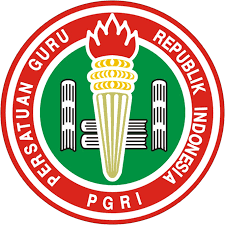TUDUNG MANTO AND THREE COUNTRIES RELATIONS (INDONESIA-MALAYSIA-SINGAPORE)
Introduction, Method, Results and Discussion, conclusion
DOI:
https://doi.org/10.36526/santhet.v5i2.1475Keywords:
Tudung manto, history, culture, diplomacyAbstract
Tudung Manto is a cloth that is usually used as a head covering and is a completeness of traditional clothing, especially for Malay women, Lingga Regency, Riau Islands. Tudung Manto has been designated as an Indonesian Intangible Cultural Heritage owned by Lingga Regency, Riau Archipelago. Tudung Manto has also been officially registered through the Ministry of Law and Human Rights under Law Number 19 of 2002 concerning the Protection of Creation in the Fields of Science, Arts and Literature. In the course of its history, Tudung Manto involved the role of Terengganu (Malaysia) and Singapore as suppliers of lametta (not gold and silver). Writing This study looks at the relationship between Lingga (Indonesia) and Terengganu (Malaysia) and Singapore in the cultural heritage of the manto tudung and its future prospects. The type of research used is qualitative research using a historical approach. Sources of data used are primary and secondary data sources. Data were obtained through searching archives and Malay manuscripts, interviews, observation and documentation studies. The results of this study show Tudung Manto's cultural heritage has the potential to open up an open space for dialogue mere-tightening the historical and cultural ties of Indonesia-Malaysia-Singapore relations. In the end, the tudung manto can be used as a tool for cultural diplomacy between Indonesia - Malaysia - Singapore and can open up opportunities for cooperation in other fields.
References
Ahmad, AS (2003). Sulalatus Salatin Malay History. Language and Literature Council, 75–80. https://www.academia.edu/10233146/Sulalatus_Salatin_A_Samad_Ahmad
Andaya, LY (2016). Leaves of the Same Tree. In Leaves of the Same Tree. https://doi.org/10.21313/hawaii/9780824831899.001.0001
Bakry, US (2017). Cultural Factors in International Relations Theory. Verity: Scientific Journal of International Relations, 9(17), 1–18.
Febriyandi, FYS (2011). The Meaning of Tudung Manto for Daik Malays. Widyariset, Vol. 14 No(7), 101–112.
Febriyandi, FYS (2018). Tudung Manto: Transforming Cultural Capital into Economic and Symbolic Capital in the Community of Daik Village, Lingga Regency, Riau Islands Province.
Haji, DRA, & Ahmad, RH (1997). Tahfat al-Nafis.
Hermawan, YP (2014). Cultural Diplomacy in Southeast Asia.
Hussin, H. (2006). Past artistic and cultural activities: production and use of textiles in the Malay world from a historical point of view. In Jebat: Malaysian Journal of History, Politics and Strategic Studies (Vol. 33, pp. 96–103).
John, A., Ming, K., & History, MAAA (nd). Reconnecting the Disconnected Through Textiles of the Malay Maritime Empire. 1–22.
Liamsi, R. (2017). Mahmud the Dissident. Press Intermedia Sagang.
Lombard, D. (2005). Nusa Java: Cross Culture Part 1 Westernized Boundaries.
Noor, AM (2014). Tracing Ethical Values in the Government of Johor-Riau-Lingga Continuing the Terengganu Version of the Naskhah Tuhfat Al-Nafis. Center for the Study and Information of Minangkabau Culture, Andalas University.
Reid, A. (2001). Understanding Melayu (Malay) as a source of diverse modern identities. Journal of Southeast Asian Studies, 32(3), 295–313. https://doi.org/10.1017/s0022463401000157
Roolvink, R. (1980). Sadjarah Riouw Lingga and Daërah Taäloqnja. Archipel, 20(1), 225–231. https://doi.org/10.3406/arch.1980.1603
Sitepu, PA (2011). International Relations Studies. In Yogyakarta: Graha Ilmu.
Suhana, S., & Norhayati, A. (2015). Kelingkan Embroidery Track-Mapping in Malaysia and Indonesia. Indigenous Knowledge Symposium, April, 45–69.
Swastiwi, AW (2018). From the Cloth Trade in Malay Nature to the Manto Lingga Tudung.
Swastiwi, AW (2021). Trading Activities of the Riau-Lingga Kingdom 18-20 Century: Historiography of the East Coast of Sumatra. National Seminar on Humanities, 1(1), 1–15.
WSP Nanggala Degree, WM & S. (2018). Cultural Diplomacy in Supporting the Achievement of National Interest and National Defense: Study Program of the Indonesia Arts Culture Scholarship (IACS) by the Ministry of Foreign Affairs of the Republic of Indonesia. Defense Diplomacy, 4(3), 104–105.
Warsito, T., & Kartikasari, W. (2007). Cultural Diplomacy (p. 4).
Wasino, & Hartatik, ES (2018). Historical Research Methods From Research To Writing. Main Library Magnum, 153.




























